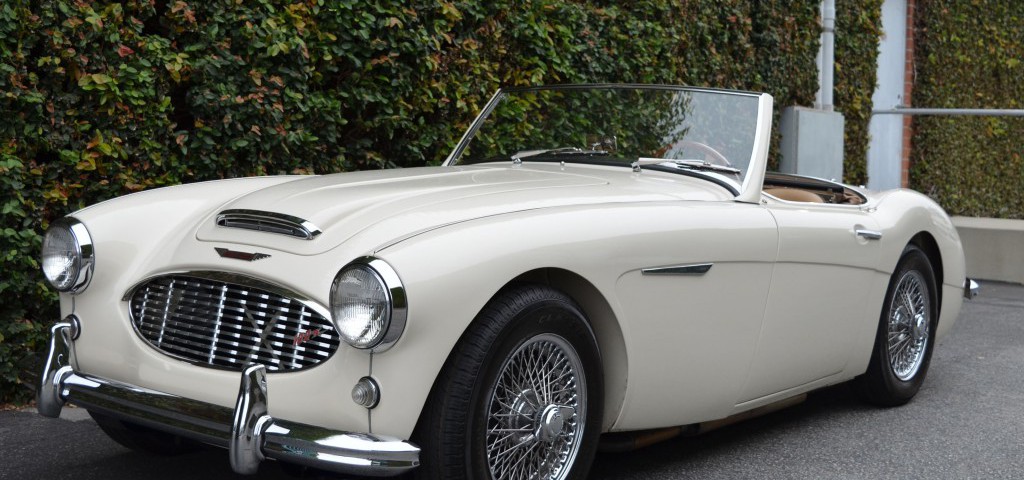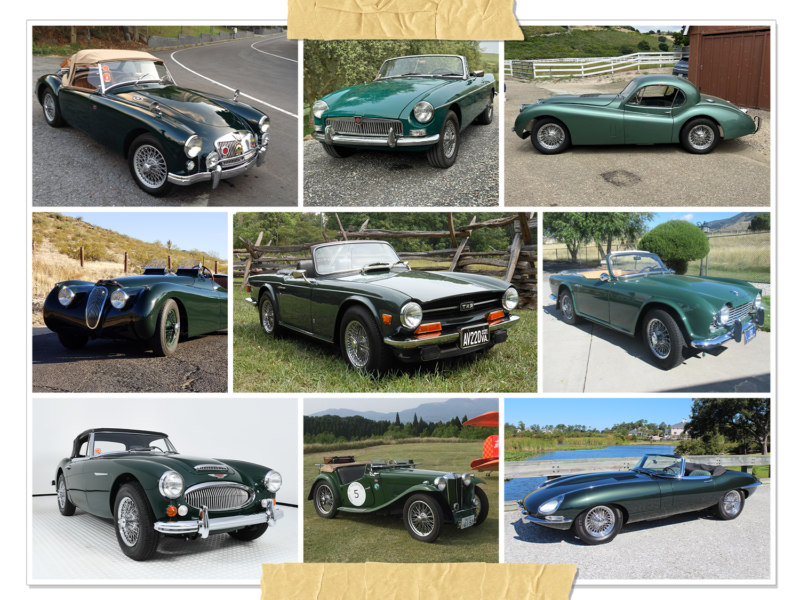When BMC discontinued A90 engine in favor of a larger Morris designed engine for its larger Austin, Morris and Wolseley sedans, Donald Healey was forced to abandon plans to adopt the 100S competition engine for production use and find a way to install the corporate C-series six-cylinder engine into its small roadster. Despite seeming to offer an increased level of performance over the A90 – with 102 hp versus 90 hp – the larger engine weighed more, produced less torque and had to power an increasingly heavier car such that overall performance was slightly reduced from the 100. The revised model was christened the 100-Six and it was to represent the bridge between the simplistic and rugged 100s and the refined and powerful 3000s that evolved from it. Unlike many interim models that are difficult to distinguish from their predecessors, the 100-Six was similar to the 100, but wholly different in detail. An increased wheelbase allowed fitment of two ‘occasional’ rear seats to provide 2 + 2 seating in the BN4 – although as a practical matter the rear seats (with shaped cushions) were unsuitable for human use – while their presence destroyed the utility a flat surface would have afforded. The longer engine required a longer hood – with clearance bulge – that also necessitated reworking the grill into an oval shape evocative of that used on the 100S. The retractable competition windscreen used on the 100 gave way to a fixed screen and the longer doors featured external handles to allow them to be opened from outside without having to reach into the interior while the fuel filler migrated from the trunk to the rear shroud.

The 100-Six bears much greater resemblance to the 100 than to the later 3000 Mk III BJ8 with more attractive – and crisper – styling that makes this the ultimate 2-seat Healey derivative.
After a year of production, final assembly of the 100-Six was moved to the MG plant at Abingdon-on-Thames, which resulted in much better quality and an improved finish from that achieved at the Austin facility in Longbridge. Concurrent with that transition, changes were finally made to the C-series engine to address the performance deficit, which had existed since the 100-Six was introduced. The most significant modification was replacement of the original cylinder head with an improved 12-port design that with larger carburetors, revised intake manifold and increased compression was capable of 117 horsepower. With the increased performance and an emphasis on publicity – Healey had used a supercharged 100-Six to break the 200-mph barrier at the Bonneville Salt Flats – sales began to improve for the model. Sports Car Illustrated was appreciative of the changes, with comments that the 100-Six was “as perfect a mating of commerce and purism as one is likely to find in the world.” A 2-seat roadster – the BN6 – would be reintroduced in 1958, but it would be substantially outsold by the 4-seat BN4, which continued to sell at a steady clip despite increased competition from Triumph with an improved TR3 and from with BMC with the MGA.

Most 100-Sixes were equipped with disc brakes that are perfectly adequate for spirited street driving but can become overworked in competition.
In competition, the 100-Six struggled early on to match the pace set by its illustrious forebear – not to mention the reputation of its creator – but found success on the rally circuit with the Team Prize from Liège-Rome-Liège and the Ladies Prize – with Pat Moss at the wheel – in the Alpine Rally. These efforts would display the potential that lurked within the C-series engine and with a chassis frame that was “put together like the main trusswork of the Golden Gate Bridge,” the six-cylinder cars were naturals for the demanding sport as the 3000 would later prove.
Driven

The improved interior may not be to everyone’s taste, but the carpeting is an improvement and the seats and door panels can be changed to OE spec with little time and effort expended.
For all but the most ardent Healey enthusiasts, it is difficult to distinguish from behind the wheel between an Abingdon-built, later 100-Six and an early Mk I 3000. Compared to a later 3000 – BJ7 or BJ8 – the 100-Six will delight with its light controls and deft feel on the road. With four-wheel drums there is no doubt that the 100-Six falls short against the disc brake equipped 3000s, but in anything short of competition use they will deliver smooth and safe stops at the expense of high pedal effort. The best thing about any 100-Six is the delightful burble that can only be matched by another six-cylinder Healey and the cars are perfect for relaxed long-distance cruising since they offer low revs at freeway speeds with overdrive engaged. Despite lacking the torque of the 3000 series, there is more than enough available to pull away from stoplights in any gear and the gearbox – despite the long lever – is easy to use although it requires a slow hand to avoid rushing the synchros. The ride on the 100-Six is more pleasant than on the 100 – largely due to the longer wheelbase – but it does not handle as well due to the additional weight of the larger engine. Driven aggressively, the 100-Six is fun and safe provided that care is exercised to avoid throttle lift in hard corners, which will force the rear end around to the potential detriment of adhesion though this is easily rectified with a stab of the accelerator pedal. Inasmuch as the 100-Six has traditionally been the most affordable of the Big Healeys, they also make some of the best drivers since they share all the same positive traits with their 3000 brethren along with lighter handling and cleaner styling.
Sampled – This 1958 Austin-Healey 100-Six BN6 comes from the stable at Chequered Flag International in Marina Del Rey, California and is an example of one of the most desirable (and valuable) Healeys ever built. In BN6 two-seat form, the svelte lines of the 100/4 were retained while adding the sonorous exhaust note of the straight six and its inimitable reservoir of torque. This particular car presents itself as something much better than your usual driver condition Healey with sharp paint and all the little details seemingly attended to. Unfortunately, the restoration went beyond mere period correct to the ‘improvement’ stage such that the interior materials are trimmed in non-standard materials. The enhanced carpeting is actually a nice touch but the seats and door cards have an almost 70s feel that can easily be corrected by installation of a Moss seat and panel kit. All in all, the best looking of the six-cylinder cars and an example that will be competitive at local shows and provide hours of great British motoring.









'Driven – 1958 Austin-Healey 100-Six BN6' has no comments
Be the first to comment this post!